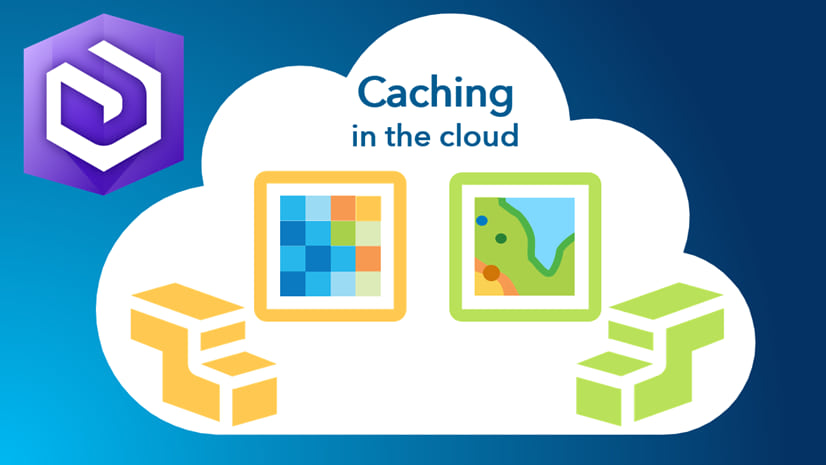Tile packages make life a lot easier when you want to share cartographically rich, high resolution data as a basemap in your organization, or when you need to distribute large cache datasets for offline workflows in ArcGIS Runtime apps.
If you spend a significant amount of time and resources creating cached raster datasets, or if you collect imagery from third parties, you may have wondered: “If only there was a way to package this data up as a tile package, share it as a hosted tile layer in ArcGIS Online or ArcGIS Enterprise, or take it offline in a mobile device!”
Well, wait no more! We’re making it easy for you to cook up your own cache and share it with others as a tile package.
An open tile package specification
Esri’s latest contribution to the open-source GIS community is an open specification for tile packages.
You can create tile caches using various tools and workflows available in ArcGIS products or using Esri’s open specification for compact caches, and then create tile packages using the open tile package specification available in Esri’s GitHub repository.
The new tile package format, which uses the .tpkx file extension, was introduced at ArcGIS Pro 2.3 and ArcGIS 10.7. It’s now the default format for all your tile package creation workflows and is supported in ArcGIS Online, ArcGIS Enterprise and applications built with ArcGIS Runtime SDK 100.5 or later for Android, Java, iOS, .NET, and Qt.
Compact caches and .tpkx
Those who have a keen eye may have noticed that the open specification for raster tiles is only available for our “CompactV2” storage format, while tile packages with the .tpk extension have been using the original “compact” storage format. To that we will say, “You’ve identified one of the key messages of this blog post!”
Tile packages with the .tpkx file extension provide a simple structure where the tiling scheme and other metadata information are stored in a JSON file and the cache tiles are stored using “CompactV2” format. This provides better performance when hosted tile layers retrieve tiles over network file shares and from cloud storage locations.
We have also introduced some new properties in the .tpkx file that provide you better control over resampling behavior of the cache, up to a scale you define.
You can choose not to create the cache tiles for all the levels of detail (LOD) of your tiling scheme, and instead only create caches between the minimum and maximum LOD. The “resampling” property will be used to display caches for the levels beyond the minimum and maximum LOD, up to the maximum scale of the package.
We hope these specifications help you to achieve your needs and take your custom cache workflows to the next level.


Article Discussion: